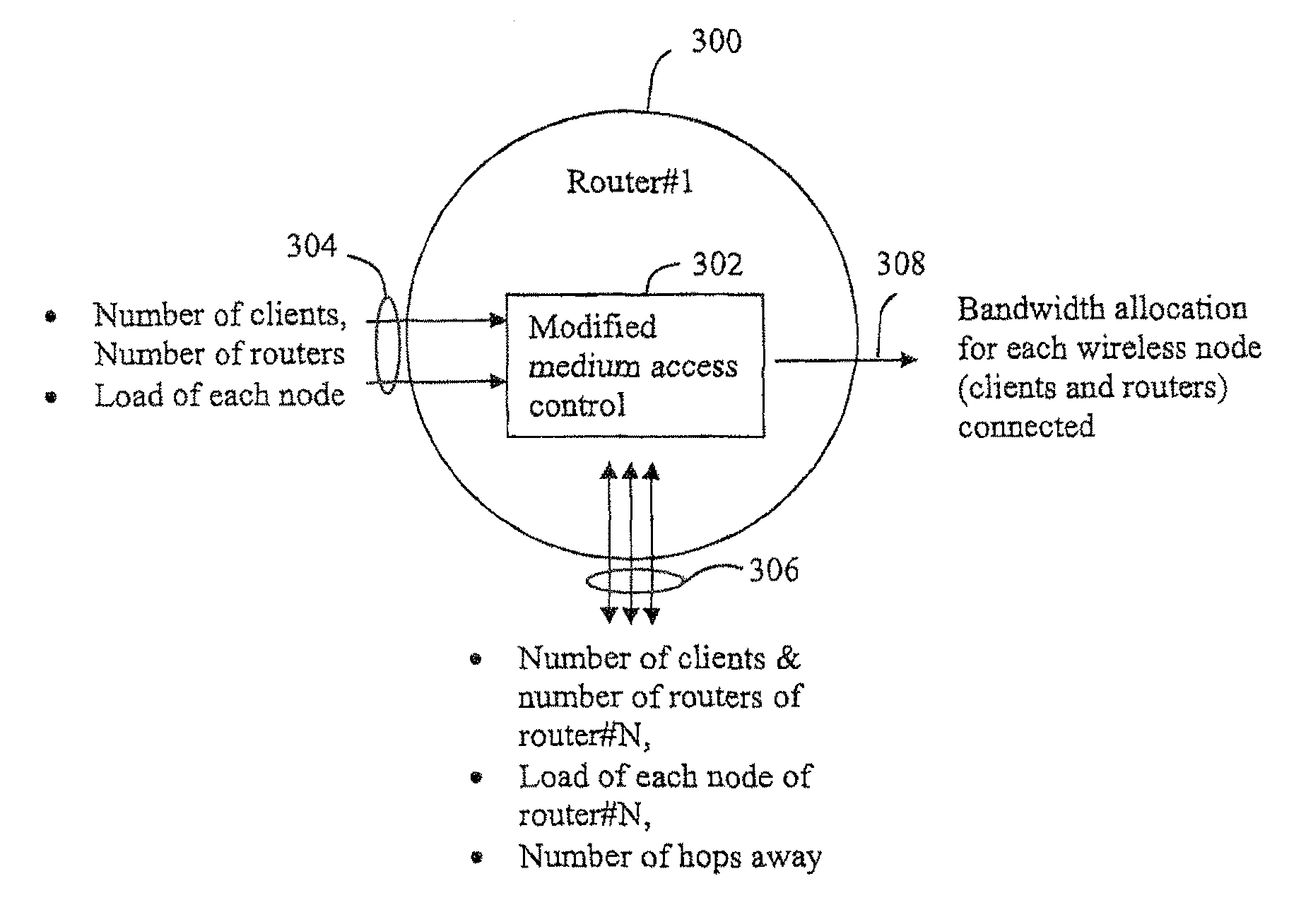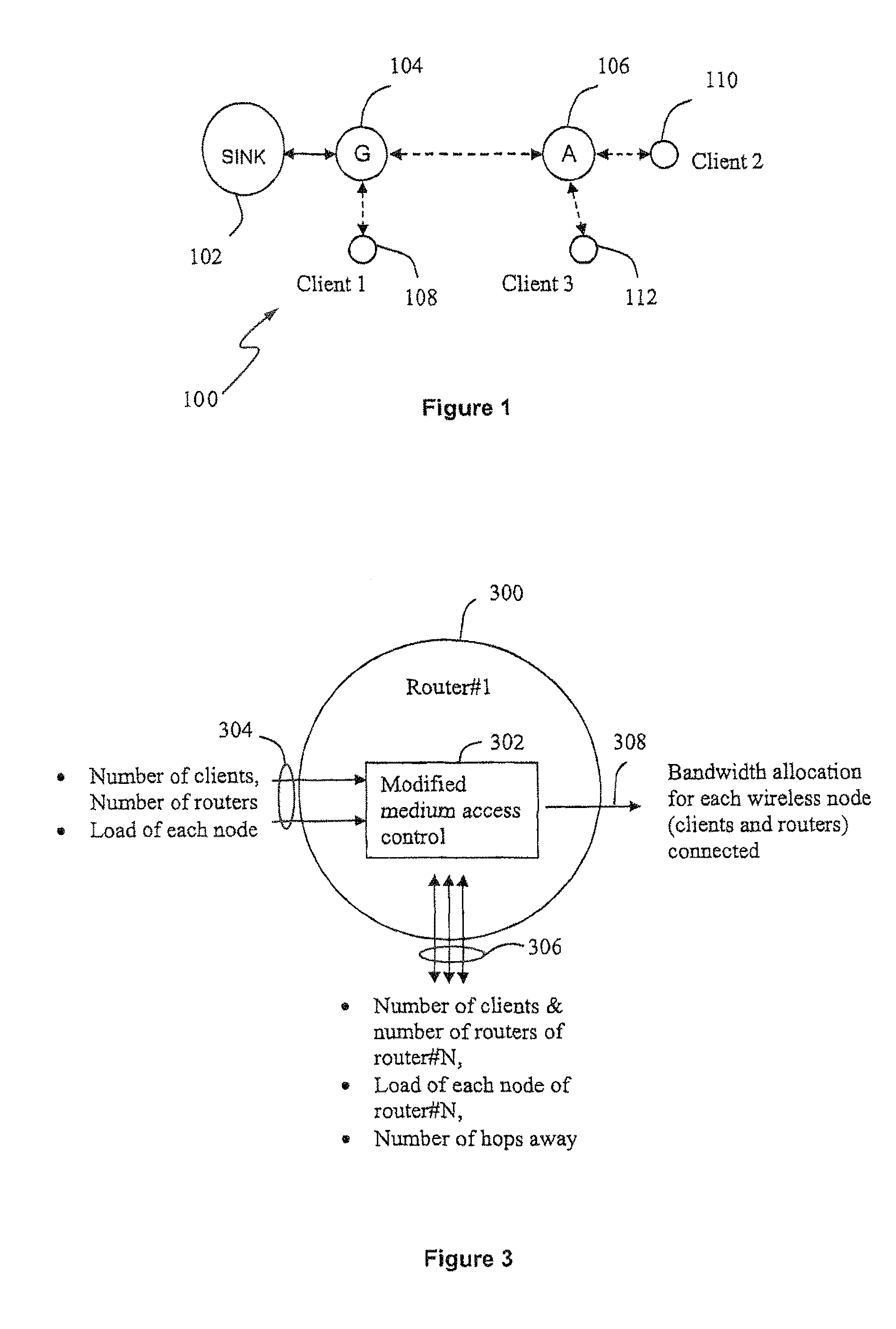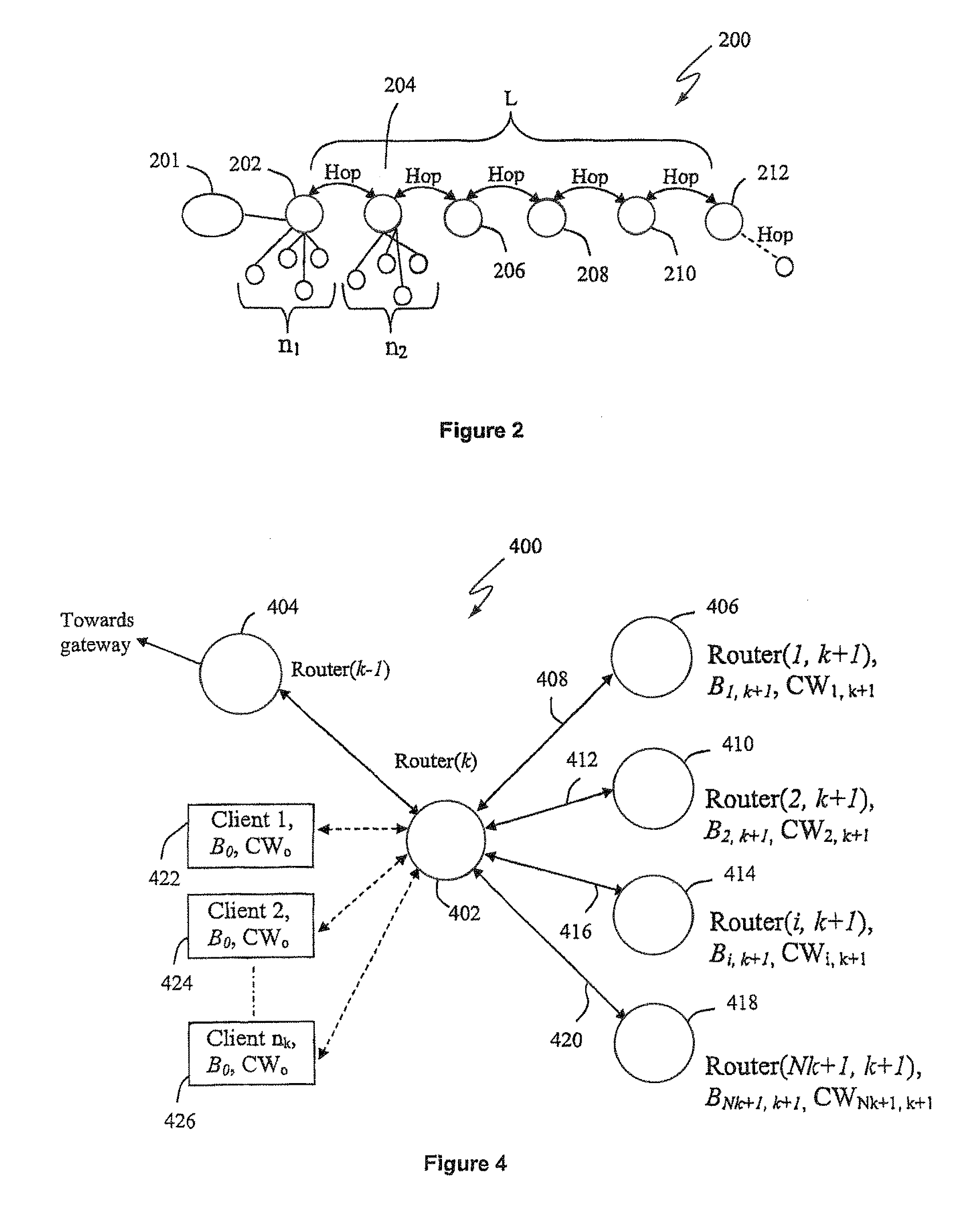Bandwidth allocation in a wireless network
a wireless network and bandwidth allocation technology, applied in the field of wireless network bandwidth allocation, can solve the problems of wmns, wmns, and wmns, and achieve the effect of reducing the probability of collision during transmission and ensuring fair bandwidth allocation
- Summary
- Abstract
- Description
- Claims
- Application Information
AI Technical Summary
Benefits of technology
Problems solved by technology
Method used
Image
Examples
Embodiment Construction
[0052]The present invention is described herein with reference to particular examples. The invention is not, however, limited to such examples.
[0053]The bandwidth or throughput that a device under 802.11 protocols has depends in part on the ‘contention window’ or ‘back-off window’. The contention window (CW) is part of the waiting period between data frame transmissions at a device, which is used to keep transmissions from colliding with each other. The contention window is divided into consecutively numbered slots, with the number of slots always being 1 less than a power of 2 (e.g. 15, 31, 63, etc). When a node wants to transmit a frame of data, it randomly selects a slot number from the range of (0,CWmin), where CWmin is referred to as the minimum contention window, which is a constant corresponding to the upper limit of the range from which the initial back-off time is selected. The node then counts up to the selected slot number before transmitting the frame. If the node does n...
PUM
 Login to View More
Login to View More Abstract
Description
Claims
Application Information
 Login to View More
Login to View More - R&D
- Intellectual Property
- Life Sciences
- Materials
- Tech Scout
- Unparalleled Data Quality
- Higher Quality Content
- 60% Fewer Hallucinations
Browse by: Latest US Patents, China's latest patents, Technical Efficacy Thesaurus, Application Domain, Technology Topic, Popular Technical Reports.
© 2025 PatSnap. All rights reserved.Legal|Privacy policy|Modern Slavery Act Transparency Statement|Sitemap|About US| Contact US: help@patsnap.com



